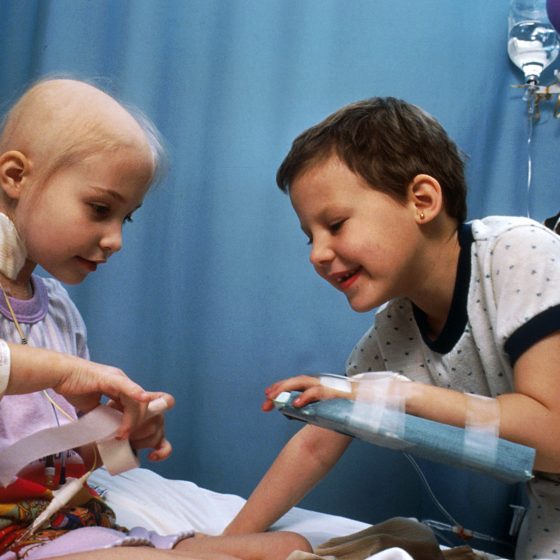Leukaemia
Acute lymphoblastic leukaemia
Introduction Acute lymphoblastic leukaemia is the most common malignancy of childhood. Leukaemia Leukaemia refers to a group of malignancies that arise in the bone marrow. They are relatively rare but together are the 12th most common cancer in the UK, responsible for around 9,900 cases and 4,700 deaths a year. There are four main types: Acute myeloid leukaemia (AML) Acute lymphoblastic leukaemia (ALL) Chronic myeloid leukaemia (CML) Chronic lymphocytic leukaemia (CLL) Presentation, prognosis and management all depend on the type and subtype of leukaemia. Acute lymphoblastic leukaemia ALL arises from a clone of lymphoid progenitor cells that undergo malignant transformation.
Leukaemia in children
Key facts Leukaemia is a type of cancer that affects the blood. There are many types of leukaemia. Most childhood leukaemias are acute — they appear fast and grow quickly. If you are worried that your child has symptoms of leukaemia, talk to your child’s doctor. What is leukaemia? Leukaemia is a type of cancer that affects the blood. It starts in the bone marrow, where blood cells are made, and spreads to the bloodstream. Leukaemia happens when the bone marrow makes too many white blood cells (lymphocytes). Lymphocytes are a part of the immune system and help to fight infection. Types
Leukaemia
Key facts Leukaemia is a group of cancers that affect the blood. The types of leukaemia are named according to the type of cells affected and how quickly the cancer grows. The symptoms of leukaemia are like those of other common conditions. There are a lot of new medicines for leukaemia, including targeted therapy and immunotherapy. What is leukaemia? Leukaemia is a group of cancers that affect the blood. They start in the bone marrow, where blood cells are made. Although the cause of leukaemia is not known in most cases, there are treatments that can help control the disease.




